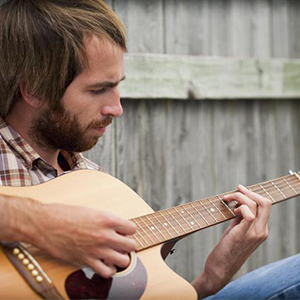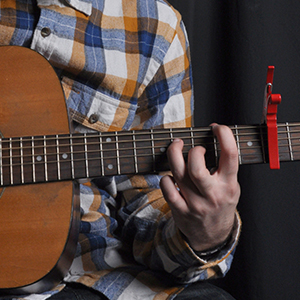- Home
- Instruments
- Gear
- Recording
- Lessons
- Reviews
- Blog
If you are a guitar player, you have probably seen some guitarists who simply dominate the fretboard. It appears that there is no limit to which chords they can fret, or what kind of a jump they can make. Although guitar is one of those instruments that isn't all that exclusive in terms of who can play it, some people are gifted more than others.
If there is one physical trait that comes in handy when you want to be proficient on guitar, it's large hands and long fingers. Guitar players who have such hands are simply better predisposed to achieve higher levels of skill faster and easier. So what about people with small hands? What kind of issues are they facing, and what solutions are there to help them overcome those issues? This is the topic we are going to dwell into today and try to explain the situation.
 Guitar players with small hands are facing a number of difficulties other guitar players don't have to worry about. Gripping certain chords is hard, especially in fast chord progressions, while some transitions are nearly impossible to make. So, what are your options if you fall within this group of guitar players?
Guitar players with small hands are facing a number of difficulties other guitar players don't have to worry about. Gripping certain chords is hard, especially in fast chord progressions, while some transitions are nearly impossible to make. So, what are your options if you fall within this group of guitar players?
The first thing you can do is search for guitars that have a scaled down fretboard. This a bit of a radical solution, but it's also the one that is most comfortable in the long run. If you're interested in what these guitars look like, and what you can expect from one, check out our list of recommended acoustic and electric guitars for small hands.
 One of the most influential ways of getting some flexibility in your hands is to do various exercises. The best one is to practice fretting distant notes with your index finger and your pinky finger. Try to reach as far as you can, some three or four frets at least.
One of the most influential ways of getting some flexibility in your hands is to do various exercises. The best one is to practice fretting distant notes with your index finger and your pinky finger. Try to reach as far as you can, some three or four frets at least.
Working on that stretch is going to take some time, but ultimately you will gain additional flexibility in your fretting hand that is going to be extremely useful later on. A good way to get yourself started on this is to grip power chords with your index finger and your pinky. It's not the textbook technique, but it will help you get used to being comfortable gripping wider distances on the fretboard.
 If you are seriously having trouble playing certain shapes on the lower notes of your guitar's fretboard, you might want to consider changing the position. As you probably know, you can play a single scale on different portions of the neck.
If you are seriously having trouble playing certain shapes on the lower notes of your guitar's fretboard, you might want to consider changing the position. As you probably know, you can play a single scale on different portions of the neck.
Going further up the neck will reduce the distance your fingers have to cover since the frets are going to be much more narrow. This doesn't necessarily mean that you have to change the octave of the bar you want to play, but rather use alternative fretting to achieve the same results. Again, this might not be the textbook way of playing guitar, but you have to make due with what you got.
On a similar note, using tools such as capos can also yield positive results. Sure, you are essentially shortening the scale of a guitar and changing the root pitch, however eliminating those tricky first few frets can turn a song from impossible to comfortable in terms of playing. Using a capo probably won't work all the time and in every single situation, but it's a great option to have available should you need it.
There is a group of guitar players who are convinced that small hands are too limiting when it comes to playing guitar. That isn't really true. You can read more about why in our dedicated article that deals with that topic in detail Are Small Hands A Deal Breaker For Playing Guitar?.
The truth is that there are ways to go around this issue. If you think about it, no matter what kind of physical predispositions a guitar player has, they will have to adjust their playing style to fit their abilities. This goes for both those who have small hands, as well as those who have large hands.
Solutions we talked about today are just some that you have available, and which you can start applying today. Getting your hands used to various shapes and chords will take time. Maybe more time than an average guitar player has to invest in same techniques, but you will get to the same result none the less.
The key here, just like it is with most things in life, is perseverance. Your ability to endure and reach your goals is the sole driving factor that can get you from point A to point B. With enough effort, a lot of problems can be solved.

Reader Interactions